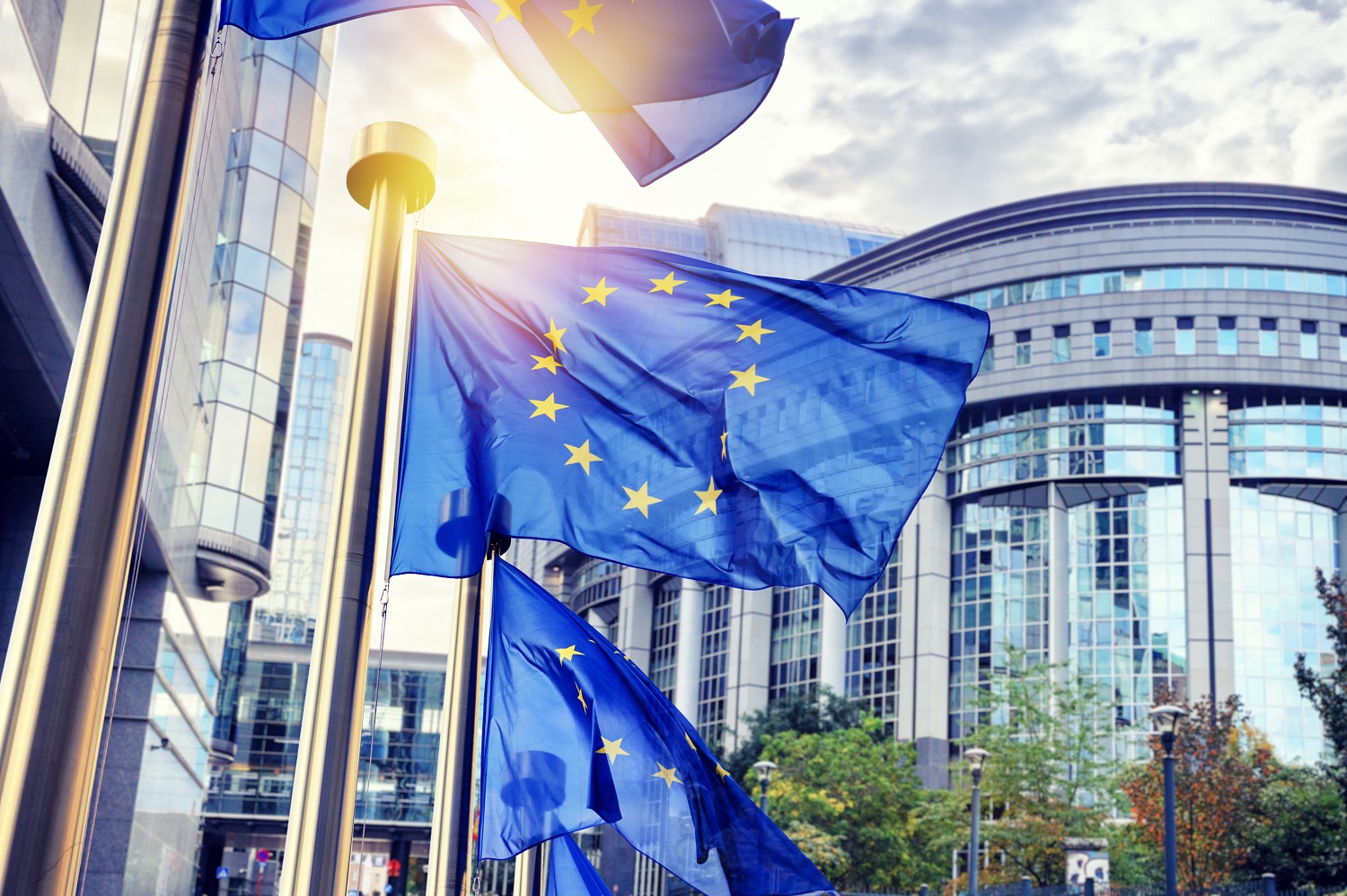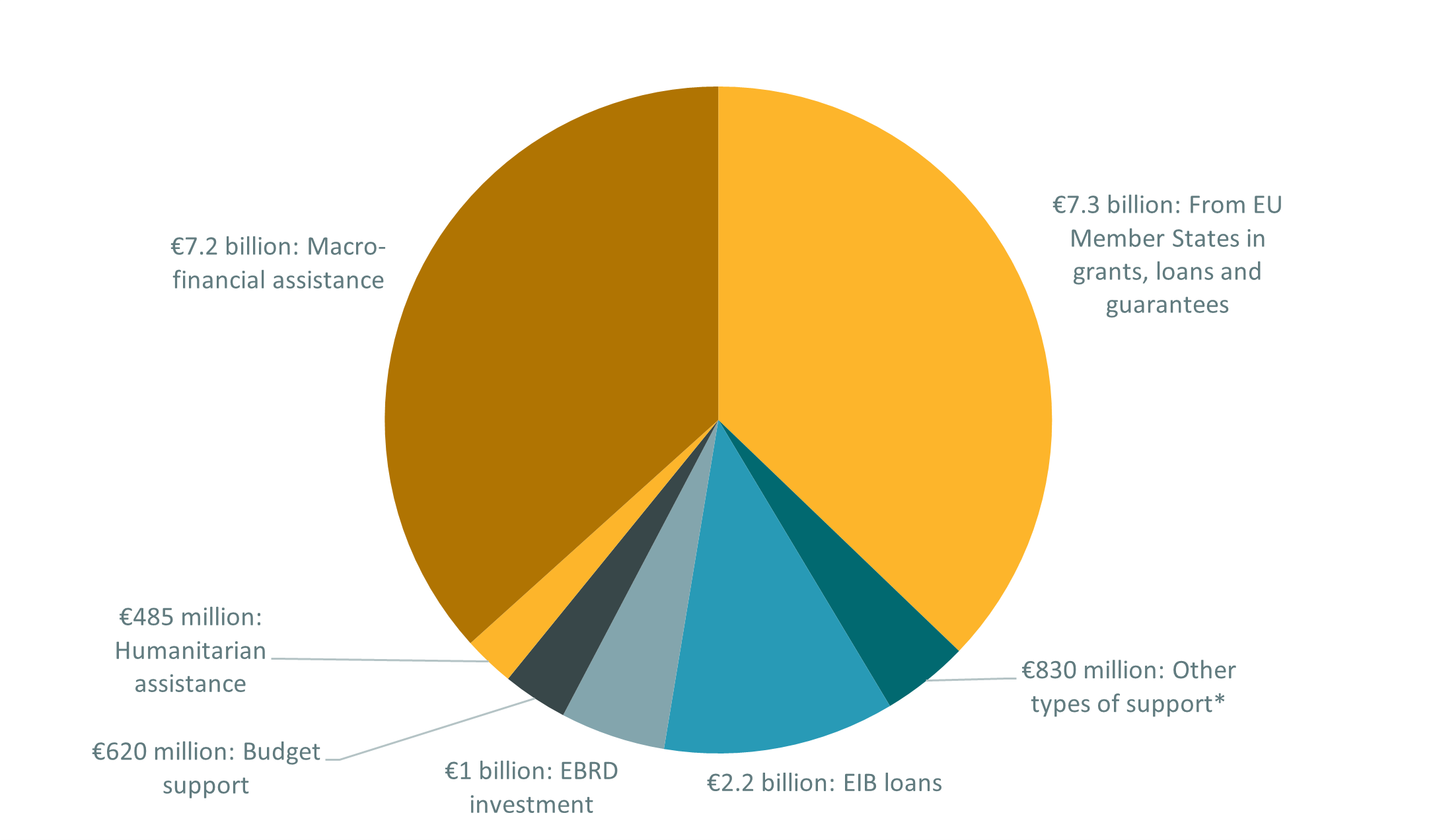Recommended

Blog Post

Event
War in Ukraine. Exploding refugee and humanitarian crises. Surging food and fuel prices. Soaring inflation and economic contraction. Skyrocketing debt in developing countries. Extreme temperatures and proliferating climate-related disasters. In 2022, European Union (EU) development cooperation was supposed to be all about ‘building back better’ from the pandemic; sustainable infrastructure; connectivity; and strengthening health and education systems across the globe. But just one week out from the EU-African Union (AU) Summit, during which the EU announced investments EUR150 billion in the African continent over the next five years, Russia invaded Ukraine and threw its plans and the entire world into disarray. The EU now faced the dual challenge of providing assistance to Ukraine while maintaining funds for other regions of the world, even more so as they were dealing with consequences of the conflict on food and energy prices.
At the start of 2023, 50 million people in 45 countries are on the edge of famine. 339 million people will need humanitarian assistance, a doubling in just four years. In 2023, pressure on the EU to deliver on its commitments while simultaneously responding to urgent crises will intensify even further.
EU support for Ukraine
The conflict in Ukraine is the first on European soil since the Balkan wars of the 1990s. The EU responded to Russia’s invasion with a common letter, and remarkable unity on sanctions, arms exports, financial aid and refugees. According to the European Commission, the EU, its Member States and financial institutions have collectively mobilized EUR19.7 billion in assistance (see Figure 1), including EUR7.2 billion in macro-financial assistance and EUR485 million in humanitarian assistance. In addition, the EU provided EUR3.1 billion in military assistance under the European Peace Facility (a ‘watershed’ move for the EU, whose treaties bar normal budget funds from going toward military operations). Responding to the millions of Ukrainians fleeing the war, the EU triggered its temporary protection mechanism, which grants forcibly displaced people legal status and access to the labour market, social benefits and education for one year (renewable for up to three). As of early January 2023, 4.9 million of Ukrainians had registered for temporary protection in the EU.
Figure 1. Team Europe support mobilized for Ukraine in 2022
Source: European Commission.
*Other types of support include: Emergency package (EUR330 million); civil society support (EUR31 million); school rehabilitation (EUR100 million); crisis response measures (EUR79 million); EU grants for blending projects (EUR94 million); on-going projects adjusted to meet urgent needs on the ground (EUR185 million); support for cybersecurity (EUR10 million).
In December 2022, the EU adopted an EUR18 billion loan package to be disbursed in quarterly instalments. This, however, only stretches as far as covering almost half of Ukraine’s short-term needs (estimated at €3-4 billion a month).
In 2023, with no end in sight to the war, and with spiralling costs of reconstruction, the pressure will be on the EU to step up and identify future sources of funding for Ukraine’s long-term reconstruction. This will be no easy feat, especially given other raging hotspots — Syria, Afghanistan, and Yemen – as well as Europe’s own severe economic downturn with massive pressures on social costs.
EU-Africa relations
Having been postponed for two consecutive years because of the pandemic, the 2022 EU-AU Summit should have been the starting point of a new relationship between the European and African continents. But criticism of the EU’s plans to invest EUR150 billion in the continent has been rife: the European Commission seems to have plucked the amount out of thin air. The amount supposedly represents an amalgamation of investments from the Member States, the EU budget and the development finance institutions, but was announced before the Member States and development finance institutions caught wind of it. EU-Africa relations were also impacted by accusations of double standards from the EU, including on the use of fossil fuels by African countries and the EU’s decisive military and financial response to Russia’s invasion of Ukraine, as opposed to the lack of resolve that many of the conflicts in Africa get.
In 2023, we will be watching closely how the implementation of the investment package for Africa evolves. While several Team Europe Initiatives (TEIs), vaccine manufacturing and vocational training for instance, have begun, disbursement rates have been sluggish. Given skyrocketing needs in Ukraine, will the EU cave in and reallocate ringfenced assistance destined for Africa to Ukraine?
Global Gateway and the EFSD+
At the end of 2021, European Commission President, Ursula von der Leyen, launched the Global Gateway, the EU’s global connectivity plan, presented as the European alternative to China’s Belt and Road Initiative. One year later, at the first meeting of the Global Gateway Board, von der Leyen herself recognized that the Global Gateway still lacked visibility and coherence. Even more worrying is the conspicuous lack of transparency around the plan and the proposed investments.
At the center of the Global Gateway is the European Fund for Sustainable Development plus (EFSD+), the main vehicle for EU private sector investments in partner countries. In December 2022, the Operational Board of the fund approved EUR6 billion of financial guarantees for 40 investment programmes to be implemented by 20 European and non-European financial institutions in Sub-Saharan Africa, Latin America and Asia Pacific in a wide array of sectors. Yet, we have been left in the dark as to the size and nature of the investments and the expected results.
If the Global Gateway is to succeed, 2023 will have to be about delivering tangible projects that have a high development impact. And if the EU really wants to distinguish itself from others, in particular China and Russia, and exert greater influence, it will need to ensure much greater transparency and accountability of the investments.
The European Financial Architecture for Development (EFAD)
In 2022, the European Commission published a “roadmap for an improved European financial architecture for development,” affirming a strong EU policy steer, promoting enhanced coordination, building a more inclusive architecture and ensuring increased visibility and influence. As per the norm, the roadmap was vague on how to achieve these lofty objectives.
This year, we will be watching closely to see how the recommendations of the roadmap are applied, including through the EFSD+ and the various TEIs. Will the European Commission finally act as a more unifying central force ensuring a clear and coherent policy steer and more effective coordination?
Climate change
In 2022, at COP27 in Egypt, the EU proposed the establishment of a loss and damage fund for countries vulnerable to climate-related disasters, resulting in a breakthrough for climate justice and announced a TEI on Climate Change Adaptation and Resilience in Africa of over EUR1 billlion. It also continued to build coalitions for Just Energy Transitions Partnerships to help emerging countries such as Indonesia and Vietnam shift towards renewables. And it reached a provisional agreement on a carbon border tax for a series of imported highly polluting raw materials.
2023 will be about the EU’s credibility with its partner countries, particularly in Africa. As it reorganises its own energy mix, away from Russian oil and gas, and continues the search for alternatives across the globe, will it continue to push African countries to phase out their dependence on fossil fuels? This is a key question, as the African continent generates only 4% of global emissions and receives a mere 12% of the finance needed to manage climate change. Transitioning from fossil fuels to renewable energy requires massive investment. Will the EU step up to provide the funds for African countries to do this?
Fighting fires in 2023
The new year brings with it a host of challenges for the EU. Will it turn its back on the fires raging across the globe to focus its efforts and resources on Ukraine? Will it finally discard the remnants of its patronising approach to its development partners? Will it resort to financing the same old-fashioned projects, with the same lack of transparency and accountability, or will it a adopt a different, more effective way of investing in and maximising development outcomes? Will it make a step change this year and put its money where its mouth is?
In a global race for strategic influence, the EU will need to make rapid choices and respond to these challenges. At stake is its own credibility as a major actor in international development.
Disclaimer
CGD blog posts reflect the views of the authors, drawing on prior research and experience in their areas of expertise. CGD is a nonpartisan, independent organization and does not take institutional positions.
Image credit for social media/web: Adobe Stock






